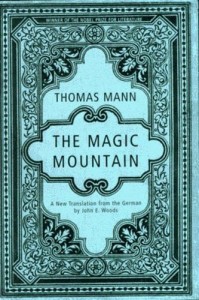Viernes, 23 de diciembre de 2011
 Extracto de La Montaña Mágica de Thoman Mann:
Extracto de La Montaña Mágica de Thoman Mann:
Leaving the building by this exit, you did not approach the garden, but came out facing directly onto an open slope of mountains meadows, dotted with a few tallish firs and several low mountains that hugged the ground. The path they took -actually it was the only one available other than the main road that descended to the valley- led them gently up the rise to their left, past the rear of the sanatorium, where the kitchens and offices were located and steel garbage cans lined the railing beside the cellar stairs, and held to that direction for a good distance, then made a sharp hairpin to the right and began a steeper ascent up to the sparsely wooded hill.
Mann es el creador de Muerte en Venecia, obra maestra que he releído varias veces, cada vez con mayor admiración.
Por eso sorprende que en La Montaña Mágica, una y otra vez, incurra en el mismo error: desviar la narrativas hacia descripciones tan tediosas como innecesarias. (Y digo esto sin querer desvirtuar las virtudes de la novela).
El párrafo citado no ilumina nada sobre la trama, ni tiene ningún otra función aparte de la descripción misma. Reducir el párrafo a dos oraciones no afectaría para nada el engranaje de la novela. Y, sin embargo, la descripción es tediosa, redundante y hasta marea. Está llena de información gris e inútil que además es difícil de procesar y retener. Nos recuerda al amigo que trata de explicarnos con lujo de detalles dónde queda un lugar insignificante en una cuidad que no conocemos.
Inconscientemente, dejamos de prestarle atención porque no tenemos la capacidad de seguir el hilo de lo que dice, ni -peor aún- el interés.
Share
